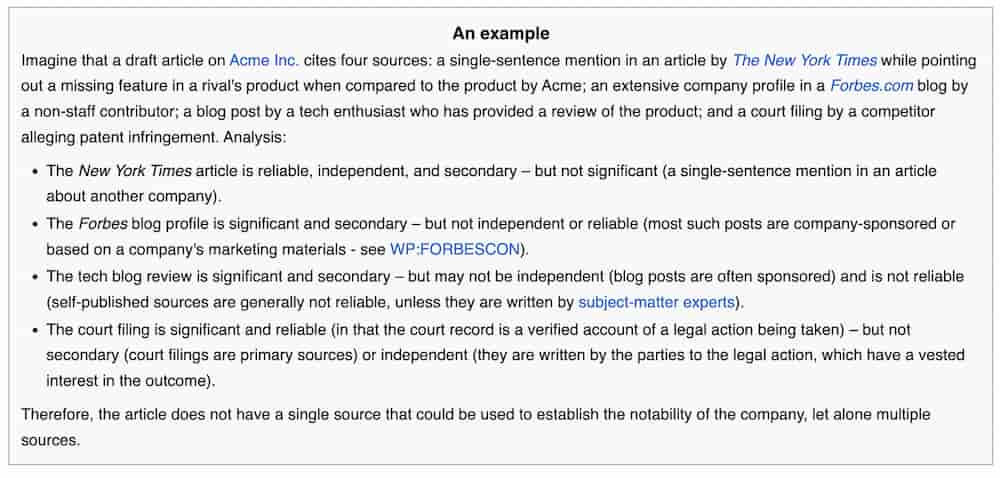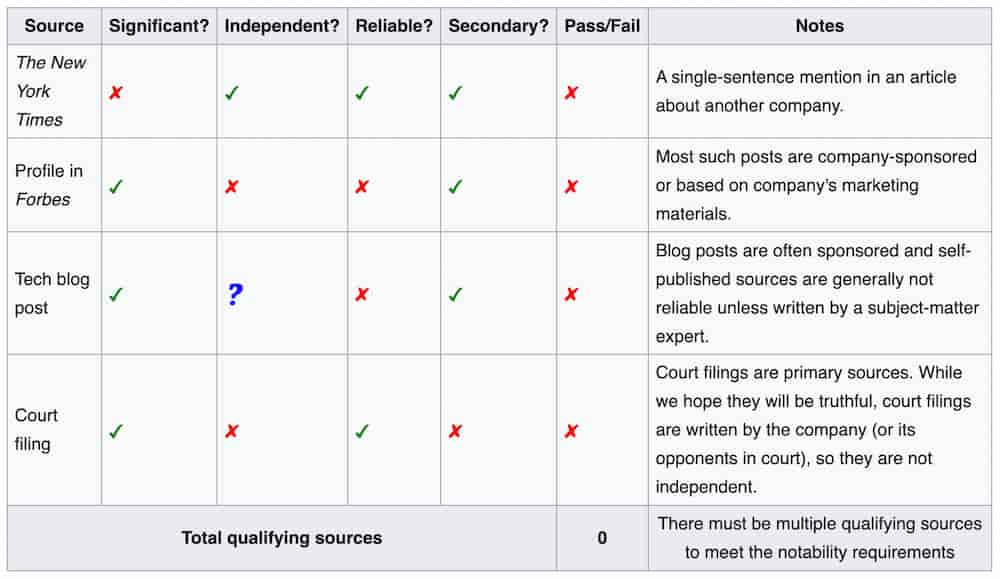What Makes a Good Wikipedia Reference

What makes a good Wikipedia reference? Should you cite that news story from five years ago? How about the blog authored by a supposed expert? Perhaps a glowing press release?
Whenever someone reads an article on Wikipedia, they’re implicitly trusting the evidence behind claims made. While Wikipedia doesn’t expect perfection, a quality reference must meet core criteria: be verifiable, reliable, unbiased, and relevant. There’s more subjectivity in there than it seems.
In this guide, I’ll walk you through what defines a strong reference for Wikipedia. We’ll look at the kinds of sources Wikipedia holds in high regard, common pitfalls you’ll want to dodge, and practical ways to quickly gauge whether a source makes the cut.
Key Takeaways
Verifiability is top priority. Every significant fact presented needs to be traceable to a reputable publisher. Picture providing breadcrumbs that any reader could follow to check and confirm the information presented.
Not every source carries equal weight. Wikipedia prioritizes academic journals, authoritative news outlets, and recognized institutions due to their rigorous fact-checking. Personal blogs, social media posts, certain industry publications, or promotional content usually don’t qualify.
Neutrality matters—a lot. Wikipedia tries to avoid sources with built-in biases, political agendas, or advocacy leanings. A quality reference informs readers without attempting to steer them toward a particular viewpoint (tough because biased humans often create it).
Keep sources timely and relevant. Outdated studies or reports can misinform as much as unreliable ones. Make sure what you are using is current to ensure articles reflect the latest understanding.
Avoid misrepresenting what a source says. In an effort to craft a Wikipedia narrative that might be less than neutral, many editors pull quotes and information out of context. This can lead to the reference being deleted by other editors as non-neutral.
- Check out the list of acceptable source types below for examples of what does or does not make the cut.
Attributes of a Reliable Wikipedia Reference
Verifiability
First up is verifiability—the practice of ensuring anyone can confirm claims by checking clearly cited, accessible sources. That’s the breadcrumb trail mentioned above. For example, imagine you’re adding information about a new medical treatment. Rather than linking to a vague news story, you’ll want peer-reviewed articles in respected medical journals like The Lancet or JAMA, where readers can see the original study, methods, and findings. If a reader can’t easily track a claim back to the origin, the article loses credibility. Always provide clear paths readers can follow to verify information. If you don’t, another editor may add a citations needed template, which is difficult to remove.

Reliable Publishers
Next consideration: the publisher behind a source matters. Wikipedia strongly favors established, reputable outlets because of their oversight and fact-checking. There are deep and spirited discussions in the Wikipedia community about which publishers are reliable. Think respected news institutions like The New York Times, government agencies, recognized academic institutions, or impactful international bodies like the United Nations.


Many editors cannot find these, and will try to rely on less important publications. For example, personal blogs or opinion websites rarely pass muster unless authored by well-known experts in their fields. For example, a self-published paper from a Nobel Laureate might earn inclusion purely based on the author’s recognized expertise. Conversely, a random blogger without demonstrable credentials likely won’t qualify. Sourcing from trusted, widely known publishers helps preserve reader confidence and keeps the article authoritative.
Consistency with Wikipedia’s Neutral Point of View (NPOV)
Neutrality is another essential quality—your sources should clearly resist steering readers toward specific political ideologies or special interests. So, imagine writing about tax policy—citing neutral government tax statistics (like IRS data or Census Bureau reports) can reinforce impartiality. Conversely, quoting heavily from articles produced by politically aligned think tanks risks introducing bias. Even factual content sourced from advocacy groups can subtly skew context. Always assess whether a source promotes objectivity, helping ensure the article consistently reflects balanced perspectives.
Date and Relevance
Finally, consider the timeliness and relevance of your references. Information in fields like technology, medicine, or environmental science changes quickly. For instance, sources from 2010 likely won’t align with today’s best practices in cybersecurity—the methods, threats, and tools have evolved significantly over the past decade. Choose recent sources whenever possible to accurately represent the current state of knowledge. Similarly, ensure sources clearly address your article’s specific topic to maintain coherence and value for readers.
Taken together, these factors—verifiability, proven publishers, neutrality, and timeliness—shape trustworthy references that readers and Wikipedia editors can depend upon. It also means that edits you make to Wikipedia can be defended more easily should they need to be.
Examples of Wikipedia Sources
Here’s a clear breakdown of common source types used by Wikipedia editors, categorized by their typical acceptability:
Usually Acceptable
- Peer-reviewed academic journals
- Books from reputable publishers
- Newspapers with editorial oversight (e.g., The New York Times, The Guardian, Washington Post)
- Magazines with strong editorial standards (e.g., The Economist, National Geographic)
- Official government reports and documents
- Official websites of recognized institutions and organizations (for factual claims about themselves)
Sometimes Acceptable
- Industry-specific publications and trade journals (Depending on editorial oversight and reputation)
- News agency reports (e.g., Reuters, AP) (Usually reliable but occasionally preliminary reports may be updated or corrected)
- Local newspapers (Depending on reputation and subject-matter; small papers with less than rigorous editorial standards may be scrutinized more closely)
- Documentaries and broadcast media (Reputable documentaries or news reports are generally reliable, but opinion-based programs usually aren’t)
- Blog posts or articles written by recognized experts (Acceptable if the author is clearly an acknowledged expert, but less credible than peer-reviewed or journalistic sources)
Rarely Acceptable
- Press releases (Typically self-serving and lacking neutrality; occasionally acceptable for basic facts but discouraged)
- Self-published books or ebooks (Usually unreliable unless the author is a well-known expert in the specific subject area)
- Social media posts (Twitter, Facebook, Reddit, Instagram) (Almost never reliable as primary sources; might occasionally be cited to illustrate public response or in limited exceptional circumstances)
- Crowdsourced content (forums, wikis, Quora, Yahoo Answers) (Generally unacceptable due to lack of reliable editorial oversight and verifiability)
- Opinion editorials (Op-eds) (Rarely acceptable for factual claims, though sometimes usable to illustrate notable perspectives that are clearly attributed to their authors)
So now you know all about good and bad Wikipedia references! 🙂
Tags: Wikipedia, Wikipedia Writing.
